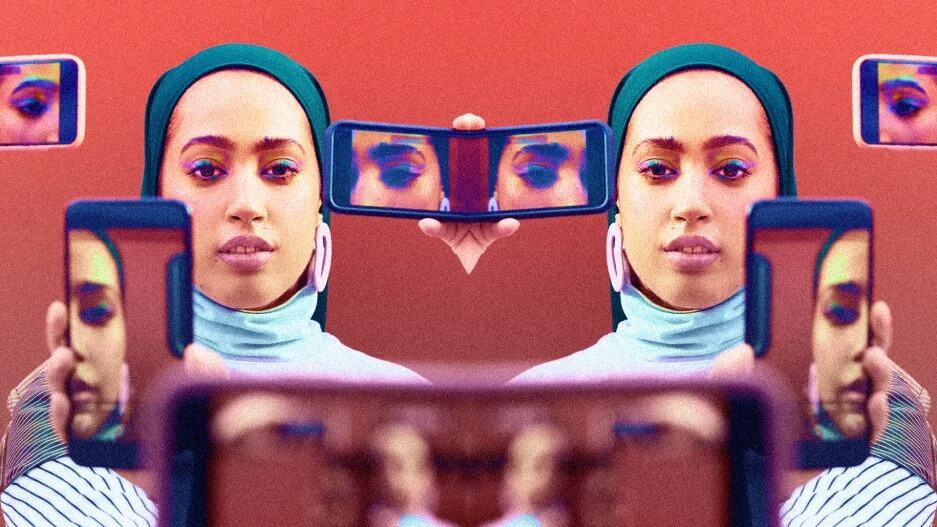- | 10:00 am
Influencers are out—authenticity is in
Marketers are pulling back on influencer campaigns—and promoting user-generated content from ‘real’ people.

The influencer economy is on the brink of a seismic shift. Catalyzed by the popularity of TikTok and its algorithm, which prioritizes content types over creators, brand marketers and digital agencies are increasingly allocating social media budgets toward user-generated content (UGC) from small creators and away from big-ticket deals with internet celebs. For many companies that pivoted to the UGC model out of sheer necessity during the pandemic—when staging photo shoots and video productions was out of the question—the results have been astonishing.
“On TikTok, we recently joined their influencer program, and the direct response ads created by influencers didn’t work well,” says Jeannie Assimos, head of content for Way.com. “Unscripted, off-the-cuff content we created blew the direct-response-style content away in all of our metrics. Testimonials [also] always do well and continue to perform in simple static ads with real people.”
After more than a decade of pouring money into partnerships with big-name influencers, marketers are increasingly wagering on less-expensive deals with amateur creators, blanketing the internet with relatable, authentic-feeling content that’s optimized for conversion.
“Brands are no longer hiring influencers to act as influencers, but rather as outsourced content farms,” says Online Optimism CEO Flynn Zaiger. “Our clients are no longer asking for follower counts or engagement rates, they’re asking for one or two pieces of example content to understand the influencer’s ability to move product.”
What is UGC? Well, anything anyone posts online qualifies, really, including text, photographs, GIFs, and videos. A recent Telus survey reveals that 83% of Americans say they’ve posted UGC—including images (52%), reviews (51%), or comments (44%). The accessibility of UGC creation and sheer amount there is to choose from makes it ripe for exploitation, and a win-win situation where nearly anyone with an internet connection and camera can participate and potentially be paid.
“It democratizes content,” says Jason Konopinski, the marketing content specialist at SocialLadder. “If you’re on a platform and you’re posting, you are now a creator and you’re creating user-generated content. The secret sauce of it is, how does that turn into something?”
According to Annette Sally, the president of Blue Sky Agency who previously led the Leo Burnett team behind Always’s 2014 #LikeAGirl social media blitz—one of the most-cited viral campaigns in the women’s personal care space—leveraging UGC is vital for amplification and impact.
“While we didn’t use UGC in the content that we put out into the world, what we did do was leverage UGC to drive the campaign and to drive awareness,” Sally says. “It changed the dynamic nature of the conversation because instead of it just existing on the plane that we introduced the campaign, now all of a sudden men were engaging and boys were engaging and dads and coaches were engaging. All of a sudden it wasn’t about boys versus girls—it was about power and confidence.”
Recently, Sally’s team enlisted content creators in a marketing program for Explore Georgia, the tourism division of the Georgia Department of Economic Development—promoting both real-life and virtual state tourism. Conceived in early 2021 during the COVID-19 pandemic, UGC provided the campaign with a practical solution for generating photo and video assets—and despite the format’s relative lack of contrived styling and professional polish, its authenticity and relatability attracted off-the-charts engagement.
“What we realized is the more ‘produced’ we are, the more disconnected you get from that passionate consumer,” Sally says. “UGC drew customers to us because it felt real. They could see themselves in that moment, whether it was the camera angle or the way people looked, and the enjoyment factor was genuine. It drove an emotional connection with our content that was a little bit unexpected.”
For business owners with limited marketing budgets, engaging with UGC can provide an affordable option for lead generation and new-customer conversion, especially when it comes to local brick-and-mortar retail, restaurants, and experiences. Pursuing content, and not a follower count, means that oftentimes deals can be done via barter with smaller creators.
“That makes it more authentic, that they aren’t really being paid to experience a place or a product,” says Elana Levin, president of Eleventh House PR. And part of the appeal of user-generated content is how attainable it makes a product or experience seem. “I think, because it gives that inclusive sort of feeling versus it feeling out of reach, people feel more connected to it.”
Levin points to one of her restaurant clients, Au Za’atar in New York’s East Village, which she started working with a few years after it opened. She collaborated with the owners to come up with an Instagram-worthy dining experience—a tower of chicken shawarma sliced up and served tableside. After she invited talented local content creators to dinner in exchange for posts, she was able to grow the restaurant’s clientele—as well as its Instagram follower count, from 700 to more than 64,000 to date.
One thing to note, Levin says, is that UGC is rarely ever one and done—it’s not like a single million-dollar Kardashian endorsement, which could make or break a brand. “Conversion isn’t necessarily always coming from one individual,” she says. “It’s multiple individuals saturating a certain place or product; it’s drumming the pavement, so people see it in their feeds constantly.”
And though the pendulum is swinging away from bigger influencers and toward the UGC marketing model, big-time creators probably have nothing to worry about. The $104 billion-a-year creator economy shows no signs of slowing, and as it grows it will likely continue to segment into a wide variety of niches serving different industries and business goals.
“The top-tier influencers are [still] great for fire-starting conversations around product launches and new brands,” Konopinski says. “The role that’s filled by your amateur creator is your brand advocate. We’re all consumers. People are enthusiastic about brands that they love and there’s a natural affinity to talking about them.”








































